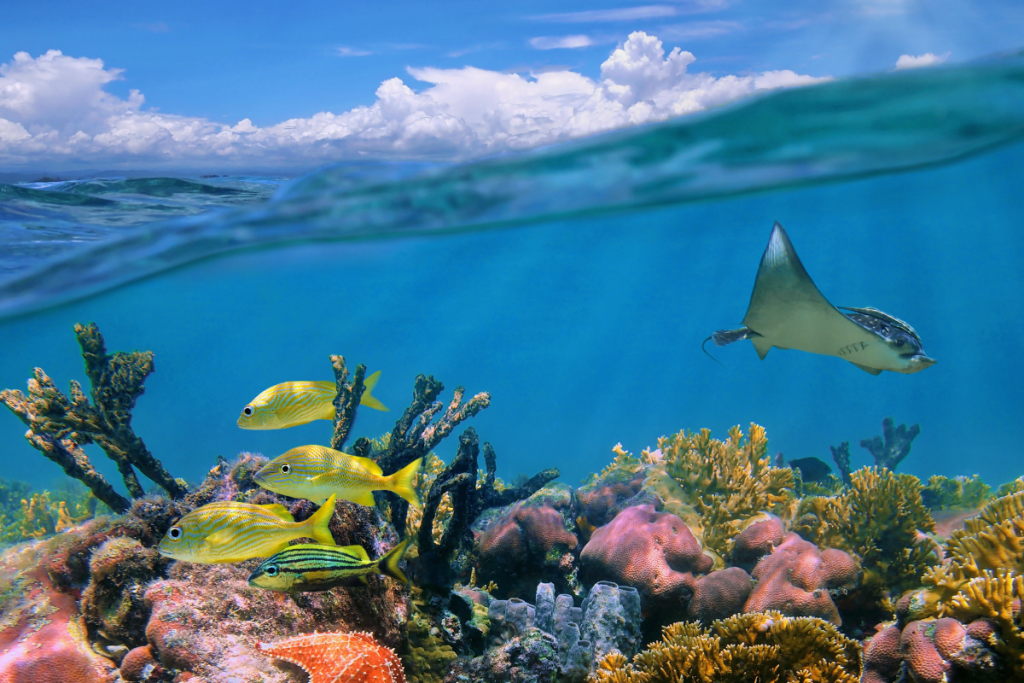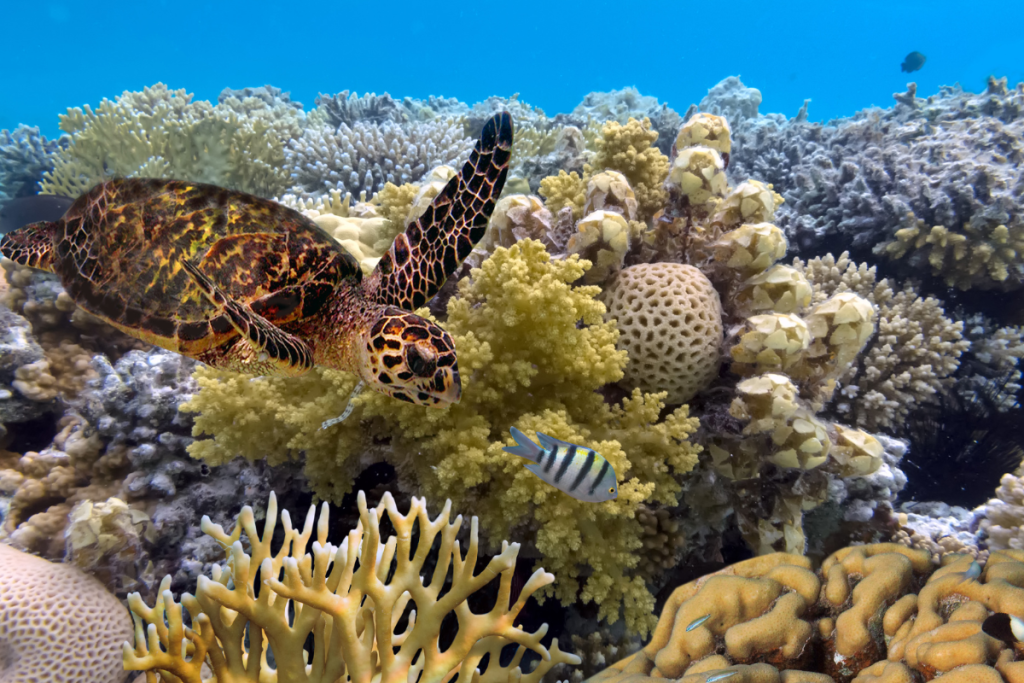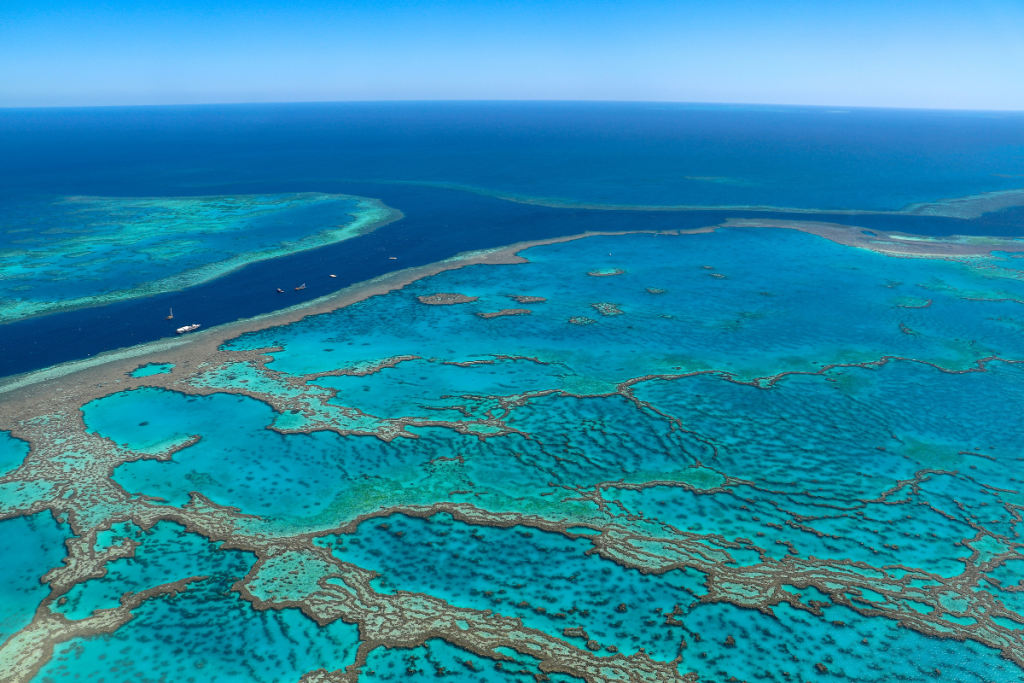The Great Barrier Reef, the world’s largest coral reef system, is home to an incredibly diverse array of wildlife and marine life. This unique ecosystem supports thousands of species, making it one of the most biodiverse and environmentally significant places on the planet.
In this guide, we’ll take a look at the wildlife and marine life in the Great Barrier Reef, from fish to mammals, birds to reptiles and more. Discovering their roles and importance within the reef, threats experienced in their habitats and what is being done to protect them.
Coral Species in the Great Barrier Reef
An Overview Of Coral Types & Species
There are around 600 different types of coral found in the Great Barrier Reef, this represents around ¾ of all known coral species globally. Featuring a variety of different colours, shapes and sizes, the coral species within the reef can be split into two main categories, hard corals and soft corals.
Hard Corals
These corals, also known as stony corals, or reef-building corals contribute to the formation and strength of the reef’s structure through their calcium carbonate skeletons. They feature six tentacles or multiples of six and are usually not as brightly coloured as their soft-bodied counterparts.
Hard corals typically grow in colonies and provide the foundation on which other corals settle and grow. Examples of hard corals include staghorn, brain, elkhorn, hump, smooth cauliflower and plate corals.
Soft Corals
Unlike hard corals, soft corals do not produce a rigid skeleton and remain soft and bendable with a wood-like core.
They tend to be brightly coloured and more visually striking than the hard corals and are often viewed as a food source for fish, snails and crustaceans. To protect themselves some species produce chemicals that make them unpleasant tasting, poisonous or they may have stinging cells in their tentacles.
While non-building corals, they also grow in colonies like hard corals and include species like sea fan, sea whip, flowerpot, tree and weeping willow corals.
Importance Of Corals To The Ecosystem
Both hard and soft corals provide food, shelter, resting and breeding grounds for the marine life of the Great Barrier Reef.
Also acting as nurseries and refuges for millions of species including endangered turtles, dolphins, whales and manta rays, they represent a space to reproduce in safety, protected from the dangers of the open ocean.
Great Barrier Reef Fish Species
The diversity of fish species inhabiting the reef is truly impressive. When we look at how much marine life is in the Great Barrier Reef, roughly 9000 species overall according to The Australian Academy of Science, 1500 of that number alone is attributable to fish.
Species of fish that call the Great Barrier Reef home include:
- Clownfish (more colloquially known as a ‘Nemo’ fish)
- Parrotfish
- Gobies
- Angelfish
- Triggerfish
- Wrasse
- Coral trout
- Gobies
- Potato Cod
- Groupers
- Butterflyfish
- Surgeonfish
- Lionfish
- Cardinalfish and many more.
A subclass of fish, several varieties of sharks and rays are also counted among the marine life of the Great Barrier Reef.
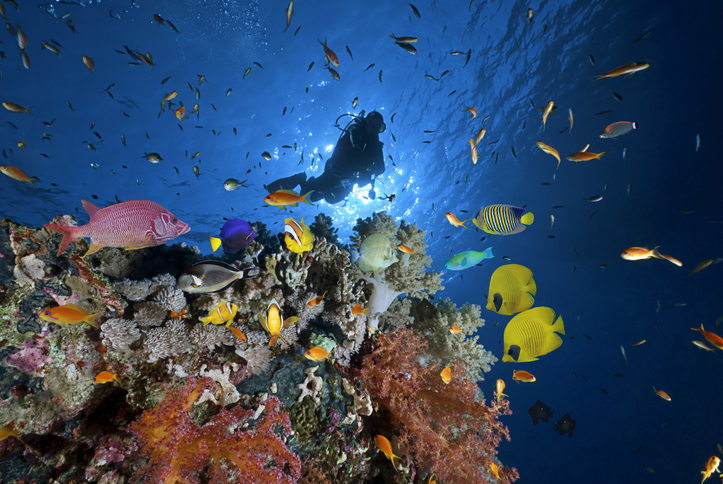
The Great Barrier Reef, the world’s largest coral reef system, is home to an incredibly diverse array of wildlife and marine life. This unique ecosystem supports thousands of species, making it one of the most biodiverse and environmentally significant places on the planet.
In this guide, we’ll take a look at the wildlife and marine life in the Great Barrier Reef, from fish to mammals, birds to reptiles and more. Discovering their roles and importance within the reef, threats experienced in their habitats and what is being done to protect them.
Coral Species in the Great Barrier Reef
An Overview Of Coral Types & Species
There are around 600 different types of coral found in the Great Barrier Reef, this represents around ¾ of all known coral species globally. Featuring a variety of different colours, shapes and sizes, the coral species within the reef can be split into two main categories, hard corals and soft corals.
Hard Corals
These corals, also known as stony corals, or reef-building corals contribute to the formation and strength of the reef’s structure through their calcium carbonate skeletons. They feature six tentacles or multiples of six and are usually not as brightly coloured as their soft-bodied counterparts.
Hard corals typically grow in colonies and provide the foundation on which other corals settle and grow. Examples of hard corals include staghorn, brain, elkhorn, hump, smooth cauliflower and plate corals.
Soft Corals
Unlike hard corals, soft corals do not produce a rigid skeleton and remain soft and bendable with a wood-like core.
They tend to be brightly coloured and more visually striking than the hard corals and are often viewed as a food source for fish, snails and crustaceans. To protect themselves some species produce chemicals that make them unpleasant tasting, poisonous or they may have stinging cells in their tentacles.
While non-building corals, they also grow in colonies like hard corals and include species like sea fan, sea whip, flowerpot, tree and weeping willow corals.
Importance Of Corals To The Ecosystem
Both hard and soft corals provide food, shelter, resting and breeding grounds for the marine life of the Great Barrier Reef.
Also acting as nurseries and refuges for millions of species including endangered turtles, dolphins, whales and manta rays, they represent a space to reproduce in safety, protected from the dangers of the open ocean.
Great Barrier Reef Fish Species
The diversity of fish species inhabiting the reef is truly impressive. When we look at how much marine life is in the Great Barrier Reef, roughly 9000 species overall according to The Australian Academy of Science, 1500 of that number alone is attributable to fish.
Species of fish that call the Great Barrier Reef home include:
- Clownfish (more colloquially known as a ‘Nemo’ fish)
- Parrotfish
- Gobies
- Angelfish
- Triggerfish
- Wrasse
- Coral trout
- Gobies
- Potato Cod
- Groupers
- Butterflyfish
- Surgeonfish
- Lionfish
- Cardinalfish and many more.
A subclass of fish, several varieties of sharks and rays are also counted among the marine life of the Great Barrier Reef.
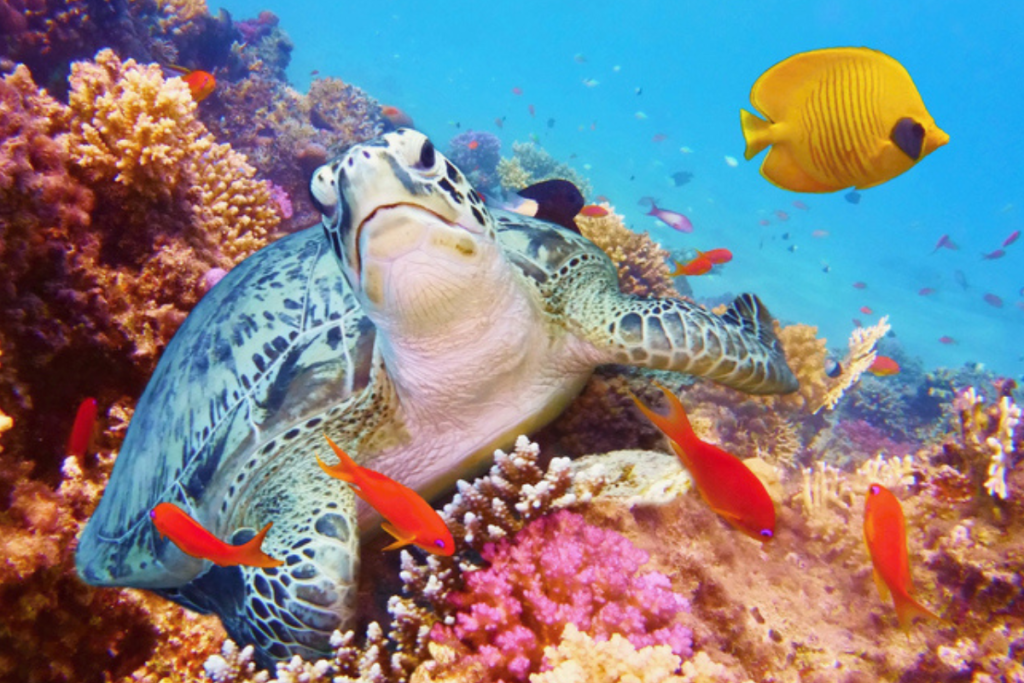
Adaptations Of Reptiles To The Marine Environment
All reptiles present in the Great Barrier Reef have adapted physiological traits that help them survive and thrive in a marine environment.
Shared attributes include:
- Toughened, scaly skin that protects against water loss
- Streamlined body shapes for more efficient movement
- Webbed feet and flipper-like limbs for enhanced swimming
- Salt glands for excreting excess salt in the ocean environment from their bodies
Birdlife & The Great Barrier Reef
Yes, even avian species interact with and contribute to the Great Barrier Reef ecosystem.
More than 200 species of birds nest and feed on the reef including seabirds, such as the white-bellied sea eagle and various terns and gulls. During the breeding season, it is estimated that more than 1 million birds are present on the reef.
The Importance Of Birds In Maintaining Ecological Balance
Important players in marine population control, birds help maintain the ecological balance of the reef through the cycling of nutrients through the deposition of guano and carrion.
Not only do they feed the growth of the reef in this way, they also contribute to the soils and plants present on islands within the reef.
Threats To Wildlife & Marine Life
Climate Change Effects On The Reef’s Biodiversity
The effects of climate change such as rising sea temperatures and increased ocean acidification are known threats to Great Barrier Reef wildlife and marine life.
A leading cause of coral bleaching and destruction of reef habitats, they also interfere with the reproductive cycles of marine reptiles and further endanger already threatened species.
Human Activities Impacting Wildlife & Marine Life
In addition to climate change outcomes, many human activities also have a devastating impact on marine life and wildlife in the Great Barrier Reef.
Things such as the use of fertilisers, pesticides and herbicides that wash into waterways and sediment runoff from overgrazed and over-cleared land are key threats. Pollution from plastic and other waste as well as overfishing are also having hugely negative impacts.
Great Barrier Reef Conservation Efforts
Thankfully there are several conservation programs aimed at protecting both wildlife and marine life and the reef as a whole. Through collaborative efforts involving traditional landowners, local communities, governments, and conservation organisations these threats are being mitigated.
Conservation efforts include heavily funded research projects into coral restoration to investments in renewable energy, turtle breeding programs, citizen science projects, educational initiatives and more.
As a UNESCO World Heritage Site, the conservation and protection of the reef’s inhabitants remains a continued focus for Australia and the international community.

